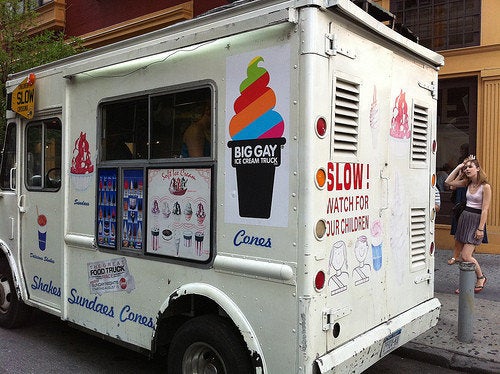
"They are unsightly and not particularly good citizens." According to AM New York, these are the words used to describe street vendors by a representative of The 34th Street Partnership, an association of business owners in Midtown Manhattan. To be more precise, the object of this critique was not street vendors as a category but those "humble vendors" that violate the rules frequently, litter, and decorate their carts with flashing lights. The association allegedly reached out to the mayor's office, which has not taken position on the issue, asking local authorities to be "more discriminatory" regarding what carts are actually allowed in the area. A business association certainly cannot deny the principle of free entrepreneurship, and "good" vendors are not singled out for criticism. In fact, what differentiates the good from the bad vendors makes this debate interesting. In the phrasing of the association's complaint, it is easy to detect some sort of aesthetic judgment, which is also considered a good way to measure the civic qualities of vendors. In other words, either they conform to acceptable public behaviors and visual styles, or they demonstrate that they do not fully embrace a set of supposedly shared values about what cities should look like and, probably, what they should sound and smell like. At stake here are the sensory qualities of cultural citizenship.
Gourmet food trucks would probably not incur the same censorship. After all, they pay attention to the design of vehicles and they offer high-quality specialty foods that are interesting, intriguing, and sought after by consumers that have the cultural capital to appreciate them and the financial means to afford them. As they advertise their presence and their menu through the Internet and Twitter, they do not need gaudy decoration to attract customers. Above all, they are part of an increasingly visible "foodie" sub-culture that feeds on values such as creativity, authenticity, and uniqueness, often struggling to find a balance between a democratic appreciation of all sorts of fares and the need for distinction based on taste and discernment.
Both the gourmet trucks and the allegedly messy carts are constitutive elements of the New York City foodscape. Any attempt at deciding what category of vendor is better suited for a specific area somehow goes against the very spirit of the city. Moreover, it denies an important part of urban history. Since the foundation of the city, street vendors have played a relevant role in how New Yorkers purchase, consume, and think of their food. Pushcarts have always provided the first access to entrepreneurship to newcomers and immigrants who started by peddling to their own communities and then expanding their business beyond their own enclaves. Of course, city authorities have always imposed regulations to these outsiders, often of color, frequently perceived as unruly, uncouth, and at times even dangerously dirty. The terms of this tension have changed over time, following the introduction of new technologies and reflecting the development of taste and mainstream ideas about what's good to eat.
Immigrant sidewalk vendors are increasingly articulating their own arguments, also thanks to the help of groups such as the Street Vendor Project, which is part of Urban Justice Center, a non-profit organization that provides legal representation and advocacy to marginalized groups of New Yorkers. The Street Vendor Project is celebrating its 10th anniversary on March 27 with a special event whose proceeds will go towards the the organization's work with food vendors. Its activities, which focus on legal and administrative counseling, also include a campaign to lower the fines that are often crippling for these small businesses, and promotional events like the annual Vendy Awards, a competition open to all street food vendors, which has attracted the attention of both the media and the public.
We can hope that the cultural -- and sensory -- diversity that has made New York City a unique place will not get lost in the attempt to discipline unfamiliar sights, smells, and gestures. Hygiene and safety are goals we can all subscribe to, keeping in mind that cultural concepts of cleanliness can vary enormously. Maintaining sanitation standards, however, is quite different from regulating the sources of what we eat so that they reflect a specific approach to what can be considered as good manners, good appearances, and good food.
For more of Fabio Parasecoli's work, visit The New School food blog The Inquisitive Eater.
